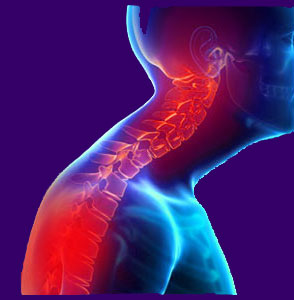
Forward head posture can be responsible for causing neck and/or upper back pain. It is one of the most common postural problems, often becoming ingrained at a young age. The condition is easy to recognize visually, although there are also formal diagnostic tests available to help evaluate the extent of postural abnormality demonstrated by any given patient.
We have seen a marked upturn in forward head positioning in the last decade, mostly due to the rapid spread of the universal use of handheld electronic devices and general computer-related occupations. We also tend to see more forward head problems in aging workers who must lean in closer to their devices due to failing eyesight. These facts are now becoming large scale concerns that are creating a need for care within the dorsalgia industry. Fortunately, forward head positioning is also reversible, but it takes time, effort and a bit of discomfort to achieve for most patients.
This focused essay examines the causes, symptoms, presentations, diagnosis and treatment of forward head positioning.
What is Forward Head Posture?
Forward head positioning, formerly referred to as readers neck or scholars neck, describes an anatomical abnormality wherein the head sits forward on the shoulders, rather than directly over it. One of the best and easiest diagnostic practices is to simply observe the patient from the side (sagittal) view. If their ear is forward from the middle of the top of the shoulder, then forward head posture is likely being expressed. In our experience, we see many cases now where the ear if fully forward of the shoulder and aligns more commonly with the clavicle.
Forward head posture presents a distinctive postural expression that is easy to recognize. Patients who demonstrate the position can be asked to flatten out with their dorsal surface against a wall, placing their buttocks, shoulder blades and occiput on the surface, with their heels slightly off the wall. If this creates difficulty, strain or discomfort, symptoms are likely either already present or imminent.
Forward Head Posture Consequences
The head is designed to rest centered over the torso. The musculature of the chest and back work together to keep the head balanced and controlled in its posture, as well as in its range of motion. Holding the weighty head forward of its proper anatomical placement places considerable stress on the neck and upper back. This stress affects both the spine, as well as the surrounding musculature. Think about the difference in effort between holding a 20 pound weight against your chest compared to holding the same weight on a completely outstretched arm for hours…
Worse still, the very demonstration of forward head posture makes the condition worsen organically. This is because the weight continues to pull forward more and more, with each small increment adding to the overall problem. The further forward the head moves, the more difficult correction efforts will be and the greater the chances for significant symptomatic expression.
Typical symptoms of forward head positioning include general lower neck and upper back pain. Many patients will feel a pulling sensation in the area between the shoulder blades. Headaches are likely and might become severe and recurrent problems. Even patients who do not experience pain (yet) will usually report uncomfortable feelings of tension in the neck.
These symptoms are all worsened when stress is present, as it is a natural human tendency to stiffen the neck and shoulders in response to internal psychoemotional pressures. In fact, we believe that many of the cases we see actually come about due to internalized tension from the psychoemotional realm showing itself during day to day activities. For example, while working at a device, the person becomes monetarily distracted by some negative psychological repression or suppression. They stiffen unconsciously in response and therefore make the muscles more prone to strain from their postural changes. Commonly painful attacks occur due to psychoemotional tension pushing the anatomical symmetry completely out of balance, resulting in acute pain.
Forward Head Posture Care
Forward head positioning symptoms are treatable and the condition itself is generally reversible, depending on its mechanism of action. Below, we provide some tips to help patients find effective treatment for postural head issues:
Physical therapists are experts in diagnosing and treating head posture problems. We tend to recommend them above other types of caregivers, although many chiropractors, orthopedists and sports medicine practitioners are also perfectly qualified.
Most discomfort can be relieved using risk-free methods of care, including ice and heat, massage, acupuncture and chiropractic. Patients should avoid drug remedies whenever possible, as these will come with collateral negative health consequences. Even OTC drugs are risky, especially when utilized for an extended timeline of self treatment.
Exercises and stretches are the most effective forms of curative care used to resolve forward head positioning syndromes. Patients must be proactive and want to fix their posture in order for these self-managed modalities to be most effective. Most stretching and exercise programs are successful, but will cause discomfort, especially when they are first attempted. Furthermore, these fixes take time to work. The worse the head posture is, the longer it may take to fully correct the condition, if full correction is even possible. Stretches and exercises should be maintained for life in order to prevent a common recurrence of postural expression and pain following cessation of formal therapy.
As a final reminder, we can not stress the importance of not sitting stressed out at a computer or handheld device for too long. These postures tend to exacerbate head posture concerns horribly. Our experience has found that many acute presentations followed emotionally stressful times spent at a computer for several hours, where the person was literally hunched over the device and incredibly tense for the entire time. Remember also that many of these emotional sensitivities are not conscious, so the tension might not be immediately attributable to a known origin.





